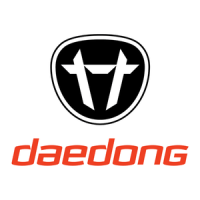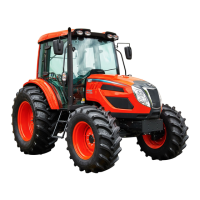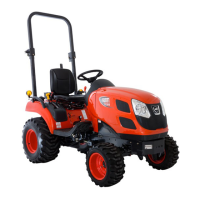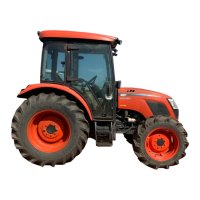Do you have a question about the Daedong Kioti LK30 and is the answer not in the manual?
Provides essential safety guidelines and general precautions for operating and maintaining the tractor safely.
Various safety guidelines for operation and maintenance.
Details the safety decals installed on the machine and their meanings.
Detailed technical specifications for the tractor.
Information on required fluids, capacities, and types.
Specifications for bolt and nut tightening for various components.
Schedule and tasks for regular maintenance intervals.
Procedures for checking and maintaining various tractor systems.
Information on tire specifications and maintenance.
Basic identification and features of the engine.
Detailed technical specifications for engine components.
How the engine systems function, including power train and lubrication.
Common engine problems and diagnostic procedures.
Technical data for clutch components and adjustments.
How the dual-stage clutch system functions.
Common clutch issues and their probable causes and solutions.
Steps for disassembling, assembling, and inspecting the clutch and related components.
Technical data for transmission components and torques.
How the transmission, gears, and drive systems function.
Common transmission issues and solutions.
Procedures for maintenance and repair of the transmission system.
Technical data for rear axle and differential components.
How the rear axle, differential, and lock systems function.
Common rear axle issues and solutions.
Procedures for maintenance and repair of the rear axle and associated parts.
Technical data for brake components and torques.
How the wet disc brake system functions.
Common brake issues and solutions.
Procedures for maintenance and repair of the brake system.
Technical data for front axle components and alignments.
How the front axle and wheel alignment systems function.
Common front axle issues and solutions.
Procedures for measuring and adjusting front axle components.
Steps for disassembling, assembling, and inspecting the front axle.
Technical data for steering system components.
How the hydraulic steering system functions.
Common steering issues and solutions.
Procedures for maintenance and repair of the steering system.
Technical data for hydraulic system components.
How the hydraulic system functions.
Common hydraulic issues and solutions.
Procedures for maintenance and repair of the hydraulic system.
Diagrams and locations of electrical components.
How electrical systems function, including starting, charging, and lighting.
Common electrical issues and solutions.
Procedures for maintenance and repair of electrical systems.
Provides essential safety guidelines and general precautions for operating and maintaining the tractor safely.
Various safety guidelines for operation and maintenance.
Details the safety decals installed on the machine and their meanings.
Detailed technical specifications for the tractor.
Information on required fluids, capacities, and types.
Specifications for bolt and nut tightening for various components.
Schedule and tasks for regular maintenance intervals.
Procedures for checking and maintaining various tractor systems.
Information on tire specifications and maintenance.
Basic identification and features of the engine.
Detailed technical specifications for engine components.
How the engine systems function, including power train and lubrication.
Common engine problems and diagnostic procedures.
Technical data for clutch components and adjustments.
How the dual-stage clutch system functions.
Common clutch issues and their probable causes and solutions.
Steps for disassembling, assembling, and inspecting the clutch and related components.
Technical data for transmission components and torques.
How the transmission, gears, and drive systems function.
Common transmission issues and solutions.
Procedures for maintenance and repair of the transmission system.
Technical data for rear axle and differential components.
How the rear axle, differential, and lock systems function.
Common rear axle issues and solutions.
Procedures for maintenance and repair of the rear axle and associated parts.
Technical data for brake components and torques.
How the wet disc brake system functions.
Common brake issues and solutions.
Procedures for maintenance and repair of the brake system.
Technical data for front axle components and alignments.
How the front axle and wheel alignment systems function.
Common front axle issues and solutions.
Procedures for measuring and adjusting front axle components.
Steps for disassembling, assembling, and inspecting the front axle.
Technical data for steering system components.
How the hydraulic steering system functions.
Common steering issues and solutions.
Procedures for maintenance and repair of the steering system.
Technical data for hydraulic system components.
How the hydraulic system functions.
Common hydraulic issues and solutions.
Procedures for maintenance and repair of the hydraulic system.
Diagrams and locations of electrical components.
How electrical systems function, including starting, charging, and lighting.
Common electrical issues and solutions.
Procedures for maintenance and repair of electrical systems.
| Engine Type | Diesel |
|---|---|
| Engine Power | 30 hp |
| Fuel Type | Diesel |
| Cylinders | 3 |
| PTO Speed | 540 rpm |
| Hydraulic System Type | Open Center |
| Displacement | 1.5 L |
| Drive | 4WD |











